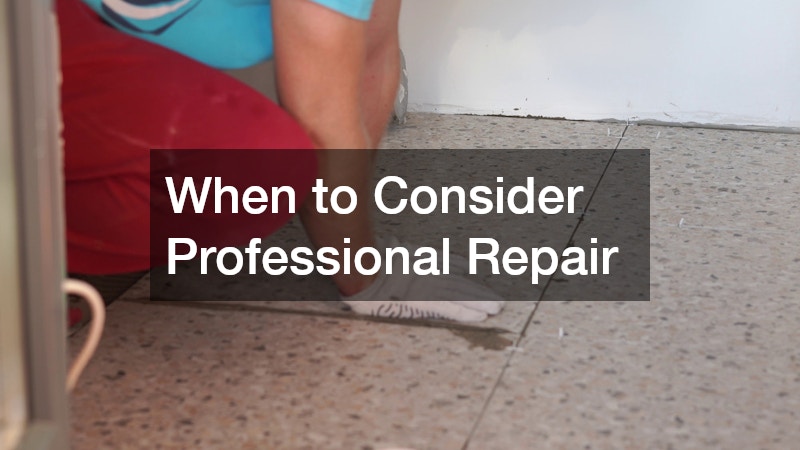In this article, we explore practical tips and essential techniques to maintain your flooring, ensuring it remains beautiful and durable for years to come. Floors are often one of the most valuable and eye-catching components of interior design, reflecting the style and taste of the occupant. Proper maintenance can vastly extend the life of your floor, allowing it to retain its charm and functionality over the years.
The Best Way to Clean Different Types of Flooring
Cleaning Hardwood Floors
Hardwood floors require a gentle, yet meticulous cleaning approach to maintain their natural beauty. Begin by sweeping daily using a soft-bristle broom to prevent dust and dirt accumulation, which can cause scratches.
Occasionally, use a damp mop paired with a hardwood-specific cleaner that won’t damage the floor’s finish.
Avoid using excessive water or steam cleaners, as moisture can lead to warping or staining of hardwood floors. Consider the environment and foot traffic in your home, and adjust your cleaning frequency accordingly. Additionally, using furniture pads is an effective preventive measure to protect against scratches from furniture movement.
Wood flooring needs a careful balance of cleaning and preservation; hence, it’s essential to only use products recommended for your specific type of wood. Overly harsh chemicals can strip away the protective finish, leaving the wood vulnerable. Regular maintenance will ensure that your hardwood floors remain an enduring element of elegance within your home.
Cleaning Tile and Stone Floors
Tile and stone floors are popular for their durability and easy maintenance, but they require specific cleaning techniques. Sweep the floors regularly to remove particles that could scratch the surface. For mopping, use a mild detergent or a tile-specific cleaner, avoiding acidic solutions that could damage the stone or grout.
Grout lines are particularly susceptible to staining and should be cleaned routinely with a brush and a specialized grout cleaner. To prevent long-term staining, consider sealing the grout annually, which creates a protective barrier against moisture and dirt. Remember, different stones have varying porosity levels, so tailor the cleaning product to the material of your stone floor.
For stubborn stains on tiles, a baking soda paste can often do the trick without harsh chemicals. This method is gentle yet effective, allowing you to maintain the floor’s aesthetic appeal. Ensuring that spills are cleaned up promptly can also prevent potential damage or unsightly marks on your tile and stone surfaces.
Protect Your Floors From Scratches and Damage
Using Floor Protectors
Floor protectors are an inexpensive yet crucial investment in prolonging the lifespan of your flooring. Products such as felt pads, rubber coasters, and glides can be easily applied under furniture to prevent drag marks and scratches. It’s advised to periodically check the condition of these protectors, as worn-out pads might degrade and lose effectiveness.
When arranging furniture, lifting it rather than dragging can also minimize direct damage to your floors. Hard casters on chairs and other movable furniture should be replaced with soft, rubber alternatives to cushion movement. Additionally, consider installing fabric or carpet runners in frequently used pathways to diffuse the pressure on hardwood floors.
Preventive Measures for High-Traffic Areas
For homes with high foot traffic, it’s important to implement strategies that safeguard floors from inevitable wear. Placing doormats at entrances serves to trap dirt and reduce the amount of debris brought inside. In interior spaces, area rugs can be used both decoratively and protectively where heavy movement is expected.
Furthermore, consider rotating these rugs periodically to ensure even wear and prevent sunlight exposure from fading specific sections of flooring. Cleaning these mats and rugs regularly will also help in reducing the amount of dirt that transfers onto the floor below. Preventive measures are key in maintaining the visual appeal and integrity of high-traffic floors.
Signs That Your Flooring Needs Repair or Replacement
Identifying Common Flooring Issues
Being able to identify early signs of wear or damage in your flooring can save you from extensive repairs down the line. Hardwood floors may show signs of cupping, which often indicates a moisture imbalance beneath the floorboards. Carpet flooring can reveal wear in areas where the texture appears flattened or matted.
Pay attention to any discoloration, which might signal water damage or failing finish, requiring prompt attention to prevent further degradation. For tiles, look for any cracks or loose tiles, which can lead to further deterioration if left unchecked. Regular inspections allow you to catch problems early and manage them before they escalate.
When to Consider Professional Repair
There comes a time when professional repair becomes a necessity despite regular maintenance. If you notice swelling or buckling in hardwood floors, it could be indicative of a more serious moisture problem requiring expertise. Similarly, deep scratches, persistent stains, or extensive carpet matting are best treated by professionals.
In some cases, floors may not be salvageable and may require complete replacement, such as severe water damage or structural issues. Expert evaluation can provide a clear directive on whether repair or replacement is the best course. Trusting professionals ensures that you leverage skilled assessment alongside comprehensive solution strategies.
Proper cleaning, use of protective elements, and timely identification of issues can bolster your floor’s longevity. Investing time and effort into maintenance will ensure your floors continue to enhance your living space, adding reflective beauty and timeless elegance.

